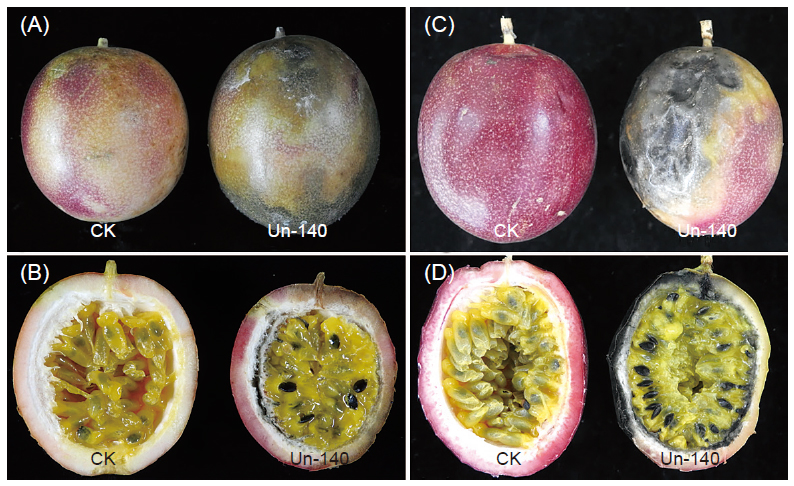All issues

Author:Chiao-Wen Huang, Yu-Ting Chang, Je-Yin Chao, and Jin-Hsing Huang*
Abstract:
A new disease caused by fruit rot of passion fruit (Passiflora edulis) was found in major passion fruit production areas at Puli Township, Nantou County of Taiwan in 2017. The infected fruits showed dark green to black patches with yellow halo. The lesions usually enlarged and joined into a large black and sunken patch with the appearance of black dots (the pycnidia of the pathogen). The flesh inside was blackened with soar flavor and easy to produce black gray hyphae. A kind of fungus was consistently isolated from the diseased tissue. The mycelium of the fungus grew rapidly on potato dextrose agar and formed a grayish-black fluffy colony with dense aerial hyphae at 24℃ after being cultured for 4 d. The conidia of the fungus were initially oval, hyaline, unicellular and had thick cell wall, but days later showed dark-brown color and developed one septum with longitudinal lines. The causative fungus was identified as Lasiodiplodia theobromae based on morphological characteristics and internal transcribed spacer (ITS) rDNA sequence blasting on National Center for Biotechnology Information (NCBI) GenBank database. The identified L. theobromae could cause similar symptoms on the fruits on trees and the detached fruits by inoculating the tested fruits with conidia suspension through wound treatment, and the same pathogen could be re-isolated from the diseased fruit tissue to fulfill the Koch’s rules. Immature and mature passion fruit could show disease symptoms when inoculated with L. theobromae through wound treatment but no symptom was found to those without wound treatment. This study is the first report about fruit rot of passion fruit caused by L. theobromae in Taiwan.
Key words:Passion fruit, Fruit rot, Lasiodiplodia theobromae
Download:![]() PDF Links
PDF Links
- 1. Development of Tractor-Mounted Seedling Transplanter for Sweet Potato
- 2. Synergistic Effect of Additional Gas on the Toxicity of Phosphine to Sitophilus oryzae and Sitophilus zeamais (Coleoptera: Dryophthoridae)
- 3. Effects of Temperature and Solar Radiation on Growth Traits and Plant Elements in Purple Leafy Sweet Potato
 Submit your manuscript
Submit your manuscript
 Guide for authors
Guide for authors